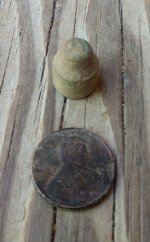woundering if anyone has any information on this story:
Russian Springs was a favorite picnic spot for residents of San Diego during the early 1900s. But even then there was no sign of a spring at the site. Only the name remains to indicate that the Russian sealers dug a well here around 1800 to water their ships.
In the early 1800s while the well was still usable, a Captain Brown put in at Russian Springs for fresh water. The name of his ship and its business in Spanish waters has been forgotten. What is remembered is that the captain was a nervous man who lived in constant fear of an attack by pirates or the Spaniards.
While he was anchored at Russian Springs, the captain had his ships money, $50,000 in gold coins, taken ashore and buried near the spring. He hoped to return later and recover it; why he never returned is not known.
Perhaps the Spaniards objected to his ships presence and made it too uncomfortable for him. At any rate, Brown decided to return to New England. But while homeward bound, his ship was lost off Cape Hope.
Only one seaman of the crew escaped drowning. He made his way to Boston, Mass., where he told Captain Browns family what had happened to the ship and treasure. The sailor did not help bury the money, so he did not know where it was. He only knew it was buried near Russian Springs. The treasure, as far as is known, has never been found.
The exact location of Russian Springs is not known today. It was at the southwest corner of San Diego Bay, at the base of what is known as the Silver Strand. The closest that it can be pinpointed is to say it is in the area where Highway 75 swings north from the cliffs of Coronado Heights, on the bayside of the highway.
Russian Springs was a favorite picnic spot for residents of San Diego during the early 1900s. But even then there was no sign of a spring at the site. Only the name remains to indicate that the Russian sealers dug a well here around 1800 to water their ships.
In the early 1800s while the well was still usable, a Captain Brown put in at Russian Springs for fresh water. The name of his ship and its business in Spanish waters has been forgotten. What is remembered is that the captain was a nervous man who lived in constant fear of an attack by pirates or the Spaniards.
While he was anchored at Russian Springs, the captain had his ships money, $50,000 in gold coins, taken ashore and buried near the spring. He hoped to return later and recover it; why he never returned is not known.
Perhaps the Spaniards objected to his ships presence and made it too uncomfortable for him. At any rate, Brown decided to return to New England. But while homeward bound, his ship was lost off Cape Hope.
Only one seaman of the crew escaped drowning. He made his way to Boston, Mass., where he told Captain Browns family what had happened to the ship and treasure. The sailor did not help bury the money, so he did not know where it was. He only knew it was buried near Russian Springs. The treasure, as far as is known, has never been found.
The exact location of Russian Springs is not known today. It was at the southwest corner of San Diego Bay, at the base of what is known as the Silver Strand. The closest that it can be pinpointed is to say it is in the area where Highway 75 swings north from the cliffs of Coronado Heights, on the bayside of the highway.



 ?
?
